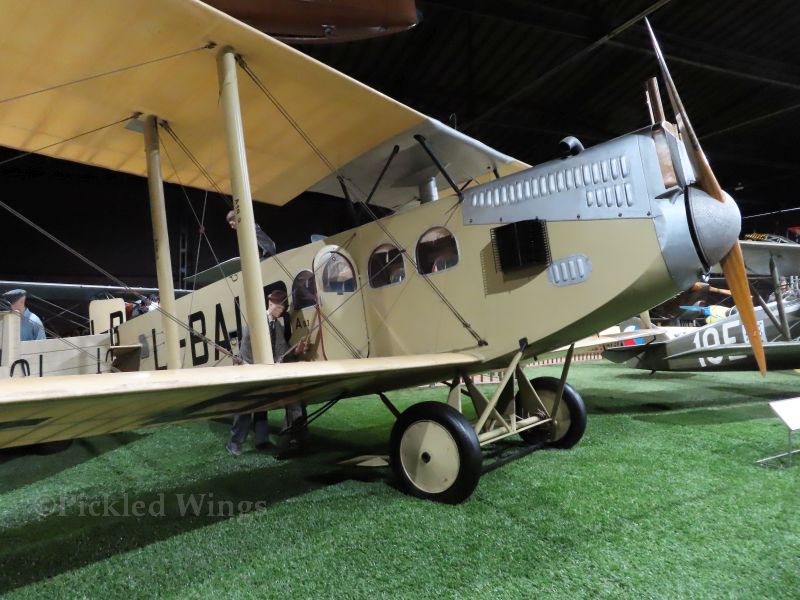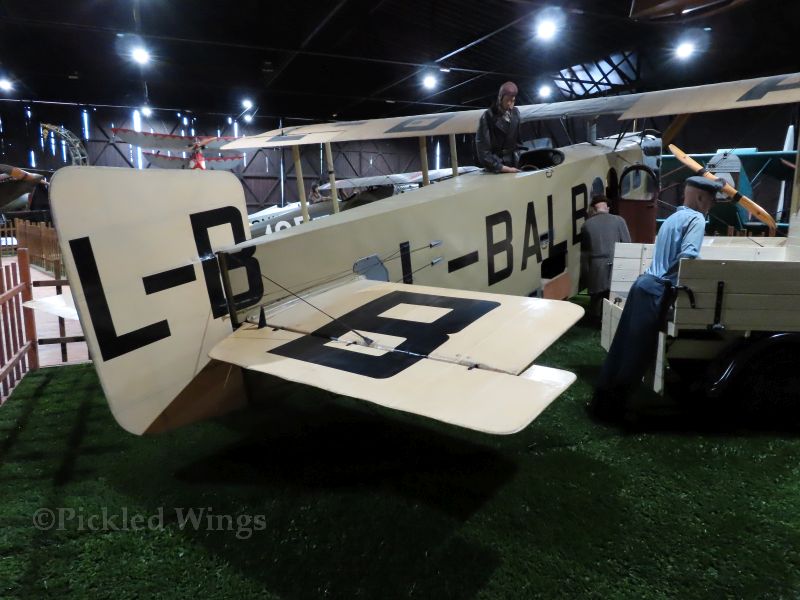A Pioneering Airliner for a Pioneering Airline
In 2023, Czech Airlines celebrated their 100th anniversary. As such, they are one of the world’s oldest still operational airlines.
With that fact in mind, it should come as no surprize that the long history of Czech Airlines and the Czech aviation industry would have some points of close connection between them.
One of those close connections is the Aero A.10 airliner. It was one of the first aircraft types flown by Czechoslovak State Airlines (ČSA), the initial name of today’s Czech Airlines. It was also one of the world’s first aircraft purposely designed as an airliner from the start.
Aero was founded in 1919 and is one of the oldest Czech aviation companies. Like some other early Czech aircraft companies, Aero started operations at Prague’s Letňany airport. By the early 1920s, Aero had moved from Letňany to a larger facility built to their own specifications in Prague’s Vysočany district. Both Letňany and Vysočany are adjacent districts to Kbely, where ČSA operated from in their early days. Quite literally being neighbours, it was not difficult for the manufacturer and the airline to work together in that era.
Aero is still in operation today as Aero Vodochody. Their current name comes from the town of Vodochody, a short distance north of Prague, which is their current base of operations.
Something to Prove
The First World War had proven that aircraft could serve practical purposes. Prior to the conflict, many people were openly dismissive of aircraft and considered them nothing more than amusements for eccentric dreamers or the wealthy.
The idea of passenger air travel took hold early as a faster alternative to land travel. However, in the interwar years, travel by air was very much the territory of the wealthy and it would not be until after the Second World War that it came within financial reach of the masses.
Some of the earliest aircraft to be used for passenger air travel were modified military utility aircraft of First World War vintage. They were neither comfortable nor ideal to the purpose of carrying passengers.
The air travel business began in earnest in the early 1920s, as it was in that period that airlines were being established and were demanding something tailored to their needs rather than an improvised solution.
Czechoslovakia, being one of the newly emergent nations in the wake of the First World War, had already proven it had domestic aircraft producers capable of designing and producing modern and capable military and general aviation types.
It was a time to prove the aircraft was a technology with the potential to move the masses.
It was also time for an aircraft producer from a newly created nation to show they were up to the task of creating larger and more complex flying machines.
The A.10 would be the first Czech designed transport aircraft.
Made to Order
While ČSA was the sole user of the Aero A.10, we must go back a few years prior to the creation of that airline to find the impetus that brought the aircraft into existence in the first place.
In spite of ČSA’s longevity, they were not the first Czechoslovak airline. Before ČSA, there was the Czechoslovak Aviation Joint Stock Company (ČsLAS), it was an order to Aero in 1921 from this earlier airline that lead to the Aero A.10.
ČsLAS specifed an aircraft with a crew of two, pilot and mechanic, that could carry between three and five passengers in a completely enclosed cabin. Five aircraft were ordered with the intent of being used on routes from Prague to various cities in Germany.
The size of the ČsLAS order, though tiny by contemporary standards, made the A.10 the world’s first purpose designed airliner to see series production.
As it was, ČsLAS would never make use of their order. By the time the prototype A.10 first flew in January of 1922, ČsLAS had gone bankrupt.
With ČsLAS out of the picture and ČSA not yet formed, there was the very big question of what to do with the aircraft order. Much work had already been done and there was a lot riding on the success of the aircraft from standpoints of commercial and technological advances as well as national pride.
The A.10 was a well designed aircraft. The passenger cabin, immediately behind the aircraft’s single engine, was double walled and had laminated windows to reduce engine noise intruding into it. Extra space between the engine compartment and cabin provided an added safety measure for the passengers in case of an engine fire.
The pilot and mechanic sat side by side in an open cockpit above and behind the passenger cabin while space in the fuselage under the cockpit was used for luggage and cargo.
The aircraft’s performance was decent for the day. It had a maximum operating height of 6,000 metres (20,000 feet), a cruising speed of 140 kmh (87 mph) and a maximum speed of 160 kmh (99 mph). In ideal conditions, it could stay aloft for four hours and had a range of around 520 kilometers (323 miles).
A Point of Pride
To the good fortunes of both the aircraft and its maker, the Czechoslovak government took over the aircraft that were built for the ČsLAS order.
The state understood how important an aircraft like the A.10 was to cementing the new nation’s place in aviation. Being a landlocked nation, air mindedness came early to Czechoslovakia and the phrase “Vzduch je naše moře” (The air is our sea) was a well established part of the national psyche even in those early days. It’s a phrase that lives on today as the motto of the modern Czech air force.
In the time between the government taking over the aircraft and the establishment of ČSA, the aircraft were kept active and were tested in a variety of ways.
The strength of the aircraft was shown in highly risky fashion in December of 1922, when an A.10 loaded with 17 people took to the air for a short flight. Aside of the extra people crammed into the passenger cabin and cockpit, a number of people were riding on the wings or otherwise holding onto the exterior of the aircraft. It was not only proof of the strength of the aircraft, but also the control that could be maintained over it by the pilot in extraordinary circumstances.
The quality of the design was shown again in July of 2023 when an A.10 made a flight in stages to Gothenburg, Sweden to take part in an airshow. In spite of some mechanical issues with the engine radiator, the aircraft made the trip successfully.
ČSA was established in October of 1923, and they used the A.10 on the Prague to Bratislava route. ČSA had a fleet of four A.10 aircraft, one of the five built was written off following a non-fatal crash in 1923, and used them only to June of 1924.
The reason for the short service life was directly attibutable to the Maybach Mb IVa engine that powered the aircraft being unreliable and temperamental. It required extremely fine throttle and carburetor control from the pilot to keep the engine from losing power.
The engine’s temperamental nature led to a number of emergency landings during the A.10’s short time with ČSA and to the airline discontinuing use of the type.
After retirement from ČSA service, the aircraft were placed in storage and eventually struck from the civil flying register in 1928. All but one were scrapped.
In their short service lives, ČSA’s Aero A.10 fleet had an accumulated 19,878 kilometers (12,352 miles) and 167.22 flying hours between them.
ČSA finished their 1924 season using their fleet of Aero A.14 aircraft, a somewhat modified version of the obsolete German designed Hansa-Brandenburg C.I utility aircraft of First World War vintage.
For the 1925 season, the airline had a combined fleet of domestically designed Letov Š-19 aircraft and DeHavilland DH.50 airliners license built by Aero.
The Aero A.10 had proven both that the aircraft had the potential for passenger service and that the young Czech aviation industry was a capable and competent one.
The Aero A.10 Today
Given that only five examples were ever made and only one survives to the present, you will need to visit the Kbely Aviation Museum in Prague to see the sole surviving Aero A.10.
That specific aircraft was the third one built and it was the aircraft used to make the last ČSA A.10 flight.
It is nothing short of a miracle that the aircraft is still with us at all. It languished in storage for many years and passed through many hands before the Military Historic Institute (VHÚ) that oversees the Kbely museum took possession of it in 1973.
There was very little of the aircraft left intact when the VHÚ got it. In 1975, a very intensive restoration and reconstruction of the aircraft was started. The completed restoration was put on display at the museum in 1977.
Today, the aircraft takes pride of place in the museum’s interwar collection.
Further Reading
Not surprizingly, the vast majority of information available on the Aero A.10 is in the Czech language. Happily, the information in the following links responds reasonably well to online translators.
This link will take you to an article at the idnes.cz news magazine website that was published for the 100th anniversary of the first flight of the A.10.
Another article published for the centenial of the first A.10 flight can be found via this link to the aeroweb.cz website.
The VHÚ website has two articles about the A.10. The first article covers some technical aspects and accomplishments while the second article talks more about the A.10 at the Kbely museum.




